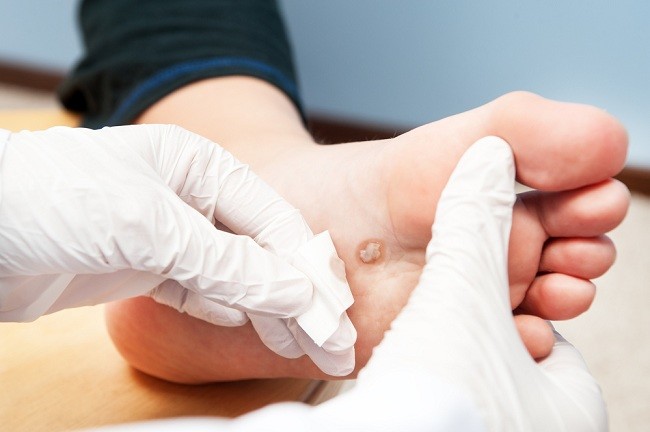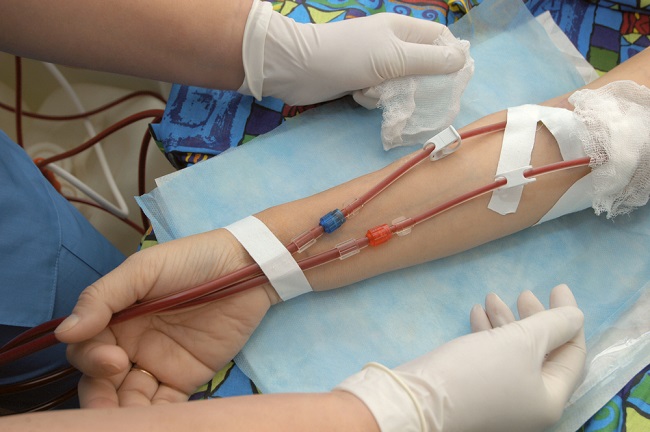Salmeterol is a drug used to prevent and relieve symptoms of asthma and chronic obstructive pulmonary disease.This drug is used by inhalation by mouth.
Salmeterol is a bronchodilator drug. This drug works by widening the airways (bronchi) in the lungs, so air can flow in and out of the lungs smoothly. That way, the symptoms of asthma and COPD, such as shortness of breath, wheezing, and coughing, can be reduced.

Trademark salmeterol: Flutias, Respitide, Salmeflo, Seretide Diskus.
What's that Salmeterol?
| group | Bronchodilators |
| Category | Prescription drugs |
| Benefit | Prevents asthma attacks and relieves COPD symptoms |
| Used by | Adults and children |
| Salmeterol for pregnant and lactating women | Category C: Animal studies have shown adverse effects on the fetus, but there are no controlled studies in pregnant women. Drugs should only be used if the expected benefit outweighs the risk to the fetus. It is not known whether salmeterol can be absorbed into breast milk or not. If you are breastfeeding, do not use this medicine without consulting your doctor first. |
| Drug form | Inhaled powder (inhaler) |
Warnings Before Using Salmeterol:
- Do not use salmeterol if you are allergic to any of the ingredients in this medicine.
- Do not use salmeterol if you have a severe acute asthma attack. This medication is only used to prevent asthma attacks and control asthma symptoms.
- Tell your doctor if you have a history of angina, seizures, heart rhythm disturbances, hypertension, diabetes, liver disease, and thyroid disease.
- Tell your doctor if you are taking any medicines, especially COPD medicines and inhalers other than salmeterol, as well as herbal medicines.
- Tell your doctor if you are pregnant, breastfeeding, or planning a pregnancy.
- If a drug allergic reaction or overdose occurs after using salmeterol, see a doctor immediately.
Dosage and Rules for Use of Salmeterol
The dose of salmeterol depends on the patient's condition. The following are general doses of salmeterol:
- Condition: chronic asthma
Adults: 50-100 mcg, 2 times daily.
Children 4-12 years: 50 mcg, 2 times daily.
- Condition: chronic obstructive pulmonary disease
Adults: 50 mcg, 2 times daily.
- Condition: asthma prevention after exercise
Adults and children 4 years and over: 50 mcg, 30 minutes before exercise.
How to Use Salmeterol Correctly
Be sure to follow the doctor's recommendations and read the instructions on the medicine package for taking salmeterol. This drug is used by inhalation through the mouth with the help of an inhaler (inhaler).
If you forget to use salmeterol, it is advisable to do it immediately if the break with the next consumption schedule is not too close. If the schedule is near, ignore it and do not double the dose.
Do not stop taking salmeterol without first consulting your doctor, as it may worsen your condition.
Salmeterol Interactions with Other Drugs
Some other drugs can cause interactions when used concurrently with salmeterol. These drugs include:
- Clarithromycin, azole antifungals (itraconazole and ketoconazole), and ritonavir. Its effect is to reduce the effectiveness of salmeterol.
- Amiodarone, quinidine, and erythromycin. The effect is to cause heart rhythm disturbances.
- Beta blocker drugs. Its effect is to decrease the effectiveness of salmeterol.
- Monoamine oxidase inhibitors (MAOIs) and tricyclic antidepressants. Its effect is to increase the effect of salmeterol in the blood vessels.
- Diuretic drugs. The effect is to increase the risk of hypokalemia.
Salmeterol Side Effects and Dangers
Some of the side effects that may arise after using salmeterol are:
- Nervous
- Cough
- dry mouth
- Hoarseness
- Throat irritation
- Stomach ache
- Heart beat
- Decreased levels of potassium in the blood (hypokalemia).
Although rare, salmeterol can also cause allergic drug reactions, chest pain, heart rhythm disturbances, and seizures. If you experience these symptoms, stop using the drug and immediately go to the doctor or emergency room for treatment.









